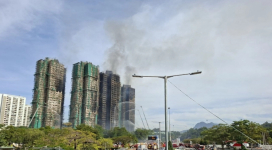Periodization is a powerful tool when it comes to creating an annual plan and exercise program for athletes and fitness participants. Sometimes, however, the greatest skill is the ability to adapt to the unexpected challenges and stumbling blocks along the road to peak performance.
This skill cannot be learned overnight as it is highly related to experience, but as long as you are aware that your plan is not engraved in stone and simply represents a basic framework, you’re halfway there! The rest boils down to having knowledge of the potential challenges in periodization, such as the number of peaks per season, overtraining and the duration of the preparatory phase.
Number of peaks per season
The more peaks you are planning during a competitive phase (as is often the case with many individual sports such as martial arts and racquet sports), the more difficult it is to peak for each important competition. Competitions are very stressful environments for an athlete, therefore, the more competitions, the more stress the athlete is exposed to. High stress without adequate rest and regeneration prior to a new competition brings your athlete closer to a state of staleness, or even overtraining.
To avoid such an unpleasant condition, you have to categorize competitions as first-, second- and third-level priorities. An example of a first-level priority competition is a championship or national title match. Categorize the rest of the competitions accordingly.
Overtraining
Planning to avoid overtraining is as important (if not more) as planning to peak for a competition. Keep the following points in mind as you create your sport-specific plan:
Never plan a challenging workout after a stressful competition. Give your athlete time to remove the physical and mental fatigue associated with competition.
Throughout a week of training, alternate low, medium and high intensity workouts.
Ensure the athlete has at least two weeks of transition training after each competitive phase to allow for the replenishment of energy stores, the removal of mental and physical fatigue and regeneration from exhaustion.
Use the step loading method as the best progression for training adaptation: one week of low intensity, followed by a medium-intensity week and then by a high-intensity week. You’ll continually repeat these microcycles, starting with a low-intensity week as an opportunity for your athlete to replenish energy stores and recover mentally and physically before continuing.
For a detailed sport-specific plan, complete the Truestar Sport-Specific Profile.
Short-duration preparatory phase
Some coaches attempt to imitate the heavy competitive schedule of many professional sports, believing that more games and competitions lead to greater improvements in athletic performance. In reality, the opposite is true. As demonstrated by many sports scientists and seasoned strength coaches, well-designed training programs do not maximize the number of competitions; rather, they focus on training to achieve the greatest amount of sport-specific adaptation. Records show that focusing on training results in performance levels beyond those gained from increased competitions.
A high number of competitions results in a longer competitive phase and, conversely, a shorter preparatory phase. The negative repercussions include:
Less time to acquire and perfect skills;
Less time to improve general conditioning (such as during the general preparatory phase);
Less time to work on improving sport-specific speed, power and endurance; and
Overuse of the same muscles and joints based on the repetitive nature of the movements involved in the particular sport. This increases the risk of injury to these areas.
The bottom line is the more you compete, the less time you have to train. Training is important as it is the time to build the strong foundation required to be successful in competition.







